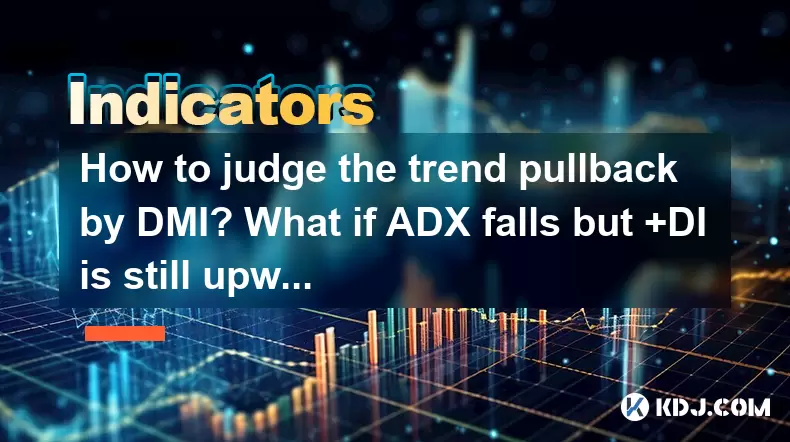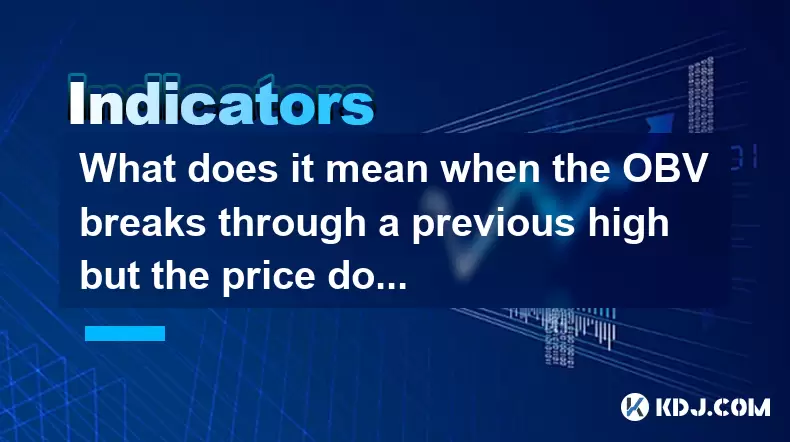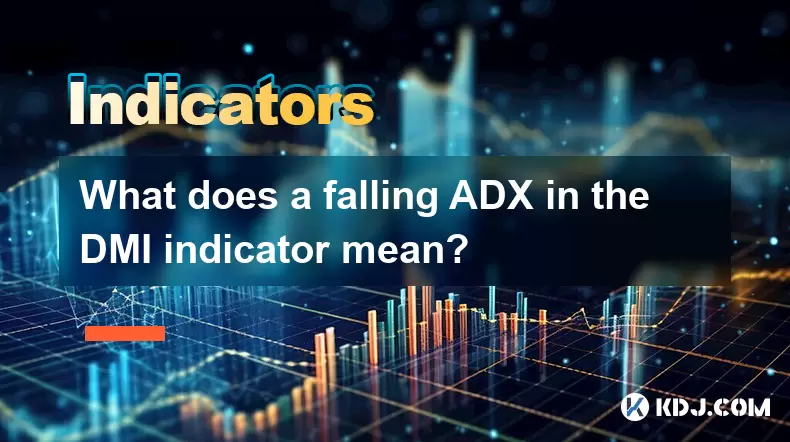-
 Bitcoin
Bitcoin $116700
0.24% -
 Ethereum
Ethereum $3973
4.34% -
 XRP
XRP $3.283
7.68% -
 Tether USDt
Tether USDt $1.000
0.01% -
 BNB
BNB $789.8
2.27% -
 Solana
Solana $176.2
3.31% -
 USDC
USDC $0.9999
0.00% -
 Dogecoin
Dogecoin $0.2238
5.14% -
 TRON
TRON $0.3389
-0.51% -
 Cardano
Cardano $0.7907
4.03% -
 Stellar
Stellar $0.4527
10.02% -
 Hyperliquid
Hyperliquid $41.07
4.27% -
 Sui
Sui $3.794
1.77% -
 Chainlink
Chainlink $19.49
10.40% -
 Bitcoin Cash
Bitcoin Cash $580.9
0.74% -
 Hedera
Hedera $0.2617
4.32% -
 Avalanche
Avalanche $23.41
3.67% -
 Ethena USDe
Ethena USDe $1.001
-0.03% -
 Litecoin
Litecoin $122.4
1.38% -
 Toncoin
Toncoin $3.364
1.49% -
 UNUS SED LEO
UNUS SED LEO $8.988
0.37% -
 Shiba Inu
Shiba Inu $0.00001295
2.82% -
 Uniswap
Uniswap $10.62
5.75% -
 Polkadot
Polkadot $3.922
4.46% -
 Dai
Dai $1.000
0.01% -
 Bitget Token
Bitget Token $4.494
2.15% -
 Monero
Monero $268.0
-1.30% -
 Cronos
Cronos $0.1523
3.68% -
 Pepe
Pepe $0.00001127
4.43% -
 Aave
Aave $285.4
4.85%
How to judge the trend pullback by DMI? What if ADX falls but +DI is still upward?
Use DMI to spot trend pullbacks: +DI crossing below -DI signals a potential pullback. If ADX falls but +DI stays up, the uptrend might resume.
Jun 01, 2025 at 09:42 pm

In the world of cryptocurrency trading, understanding technical indicators is crucial for making informed decisions. One such pair of indicators that traders often use is the Directional Movement Index (DMI) and the Average Directional Index (ADX). In this article, we will delve into how to judge trend pullbacks using DMI and what to do if the ADX falls but the +DI remains upward.
Understanding DMI and ADX
DMI consists of two lines: the Positive Directional Indicator (+DI) and the Negative Directional Indicator (-DI). These lines help traders identify the direction of a trend. +DI measures the upward movement in price, while -DI measures the downward movement. When +DI is above -DI, it suggests a bullish trend, and when -DI is above +DI, it indicates a bearish trend.
ADX, on the other hand, is a separate line that measures the strength of the trend, regardless of its direction. A rising ADX indicates a strengthening trend, while a falling ADX suggests a weakening trend. Typically, an ADX value above 25 is considered indicative of a strong trend, while values below 20 suggest a weak or non-existent trend.
Identifying Trend Pullbacks with DMI
A trend pullback occurs when the price temporarily reverses its direction within an ongoing trend. To identify a trend pullback using DMI, traders should look for the following signals:
- Crossing of +DI and -DI: A trend pullback can often be identified when the +DI and -DI lines cross each other. If the +DI crosses below the -DI in an uptrend, it suggests a potential pullback. Conversely, if the -DI crosses below the +DI in a downtrend, it indicates a potential pullback in a bearish trend.
- ADX behavior: During a pullback, the ADX may start to decline, signaling a weakening of the trend's strength. However, the ADX should not fall too drastically, as a significant drop could indicate the end of the trend rather than a mere pullback.
Analyzing the Scenario: ADX Falls but +DI Remains Upward
When the ADX falls but the +DI remains upward, it presents a unique situation that traders need to interpret carefully. Here’s how to approach this scenario:
- Assess the ADX value: First, check the current value of the ADX. If it is still above 25, the trend might be weakening but still strong enough to continue. If it falls below 20, it might signal the end of the trend.
- Evaluate the +DI trend: Since the +DI is still upward, it suggests that the bullish momentum is intact. This could mean that the pullback is temporary and the uptrend might resume.
- Monitor other indicators: Use other technical indicators, such as moving averages or the Relative Strength Index (RSI), to confirm the strength of the trend. If these indicators also suggest a strong bullish trend, it might be a good time to hold onto your positions.
Practical Example: Using DMI and ADX on a Cryptocurrency Chart
To illustrate how to use DMI and ADX to judge trend pullbacks, let’s walk through a practical example using a hypothetical cryptocurrency chart.
- Open your trading platform: Ensure you have access to a trading platform that supports technical indicators.
- Add DMI and ADX indicators: Navigate to the indicator settings and add both the DMI and ADX indicators to your chart.
- Identify the current trend: Look at the position of the +DI and -DI lines. If +DI is above -DI, you are in an uptrend. If -DI is above +DI, you are in a downtrend.
- Monitor for a pullback: Watch for the +DI and -DI lines to cross each other. If you are in an uptrend and +DI crosses below -DI, it could signal a pullback.
- Observe the ADX: Check the ADX line. If it starts to decline but remains above 25, it might indicate a weakening but still strong trend. If it falls below 20, the trend might be ending.
- Analyze the +DI: If the +DI remains upward despite the falling ADX, it suggests that the bullish momentum might still be present.
Trading Strategies Based on DMI and ADX
Based on the insights gained from DMI and ADX, traders can develop specific strategies to capitalize on trend pullbacks and manage their positions effectively.
- Entering a position during a pullback: If you identify a pullback in an uptrend, and the ADX is still above 25 with the +DI remaining upward, it might be a good opportunity to enter a long position. The idea is to buy at a lower price during the pullback and benefit from the resumption of the uptrend.
- Exiting a position during a pullback: If you are already in a long position and notice a pullback with the ADX falling below 25, it might be prudent to exit your position to avoid potential losses if the trend reverses.
- Using stop-loss orders: Always set stop-loss orders to manage risk. If the ADX falls significantly and the +DI starts to decline, consider adjusting your stop-loss to protect your profits.
Combining DMI and ADX with Other Indicators
While DMI and ADX provide valuable insights into trend direction and strength, combining them with other indicators can enhance your trading strategy.
- Moving Averages: Use moving averages to confirm the trend direction. If the price is above a long-term moving average, it supports the bullish trend suggested by the DMI.
- RSI: The Relative Strength Index can help identify overbought or oversold conditions. If the RSI is not in overbought territory during a pullback, it might suggest that the uptrend could continue.
- Volume: Monitor trading volume during pullbacks. If volume decreases during the pullback, it might indicate that the pullback is temporary and the trend could resume.
Frequently Asked Questions
Q: Can DMI and ADX be used for short-term trading?
A: Yes, DMI and ADX can be used for short-term trading, but they are more effective when combined with other short-term indicators like the RSI or Bollinger Bands to confirm short-term trends and pullbacks.
Q: How often should I check the DMI and ADX indicators?
A: The frequency of checking these indicators depends on your trading style. For day traders, checking every few hours or even more frequently might be necessary. For swing traders, daily or even weekly checks might suffice.
Q: What should I do if both +DI and -DI lines are flat and the ADX is low?
A: If both +DI and -DI lines are flat and the ADX is low, it indicates a lack of trend. In such cases, it might be best to avoid trading until a clear trend emerges, as the market is likely in a consolidation phase.
Q: Is it possible to use DMI and ADX on all timeframes?
A: Yes, DMI and ADX can be used on any timeframe, from 1-minute charts to weekly charts. However, the effectiveness of these indicators might vary depending on the timeframe, and they should be used in conjunction with other indicators appropriate for the chosen timeframe.
Disclaimer:info@kdj.com
The information provided is not trading advice. kdj.com does not assume any responsibility for any investments made based on the information provided in this article. Cryptocurrencies are highly volatile and it is highly recommended that you invest with caution after thorough research!
If you believe that the content used on this website infringes your copyright, please contact us immediately (info@kdj.com) and we will delete it promptly.
- Coinbase, Cosmos, and dYdX: Navigating the Crypto Currents
- 2025-08-09 06:30:16
- BNB Price, Altcoins, and Predictions: What's the Buzz?
- 2025-08-09 06:30:16
- Crypto Presale Projects Primed for Gains in 2025: A New Yorker's Take
- 2025-08-09 06:50:15
- Ruvi AI: The Millionaire Maker Poised for a Price Spike?
- 2025-08-09 06:50:15
- Cold Wallet, CoinMarketCap, Cardano & XRP: Navigating Crypto's Next Big Wave
- 2025-08-09 07:10:15
- Hedera (HBAR) Price Surge: Market Cap Soars, What's Next?
- 2025-08-09 07:10:15
Related knowledge

When the J line in the KDJ indicator suddenly turns downward after being continuously overbought, does it indicate a top?
Aug 09,2025 at 06:35am
Understanding the KDJ Indicator and Its ComponentsThe KDJ indicator is a momentum oscillator widely used in cryptocurrency technical analysis to ident...

What does it mean when the TRIX indicator suddenly diverges downward after a long period of convergence?
Aug 09,2025 at 12:56am
Understanding the TRIX Indicator in Cryptocurrency TradingThe TRIX indicator, or Triple Exponential Average, is a momentum oscillator used in technica...

What does it mean when the OBV breaks through a previous high but the price doesn't reach a new high?
Aug 09,2025 at 07:57am
Understanding the On-Balance Volume (OBV) IndicatorThe On-Balance Volume (OBV) is a technical analysis indicator that uses volume flow to predict chan...

Why is the rise limited after a MACD bottoming divergence?
Aug 09,2025 at 12:07am
Understanding MACD Bottoming Divergence in Cryptocurrency TradingThe MACD (Moving Average Convergence Divergence) is a widely used technical indicator...

What does it mean when the OBV continues to rise but the price is trading sideways?
Aug 08,2025 at 10:35pm
Understanding On-Balance Volume (OBV)On-Balance Volume (OBV) is a technical indicator that uses volume flow to predict changes in stock or cryptocurre...

What does a falling ADX in the DMI indicator mean?
Aug 09,2025 at 03:16am
Understanding the ADX and DMI Indicator FrameworkThe DMI (Directional Movement Index) is a technical analysis tool developed by J. Welles Wilder to id...

When the J line in the KDJ indicator suddenly turns downward after being continuously overbought, does it indicate a top?
Aug 09,2025 at 06:35am
Understanding the KDJ Indicator and Its ComponentsThe KDJ indicator is a momentum oscillator widely used in cryptocurrency technical analysis to ident...

What does it mean when the TRIX indicator suddenly diverges downward after a long period of convergence?
Aug 09,2025 at 12:56am
Understanding the TRIX Indicator in Cryptocurrency TradingThe TRIX indicator, or Triple Exponential Average, is a momentum oscillator used in technica...

What does it mean when the OBV breaks through a previous high but the price doesn't reach a new high?
Aug 09,2025 at 07:57am
Understanding the On-Balance Volume (OBV) IndicatorThe On-Balance Volume (OBV) is a technical analysis indicator that uses volume flow to predict chan...

Why is the rise limited after a MACD bottoming divergence?
Aug 09,2025 at 12:07am
Understanding MACD Bottoming Divergence in Cryptocurrency TradingThe MACD (Moving Average Convergence Divergence) is a widely used technical indicator...

What does it mean when the OBV continues to rise but the price is trading sideways?
Aug 08,2025 at 10:35pm
Understanding On-Balance Volume (OBV)On-Balance Volume (OBV) is a technical indicator that uses volume flow to predict changes in stock or cryptocurre...

What does a falling ADX in the DMI indicator mean?
Aug 09,2025 at 03:16am
Understanding the ADX and DMI Indicator FrameworkThe DMI (Directional Movement Index) is a technical analysis tool developed by J. Welles Wilder to id...
See all articles

























































































